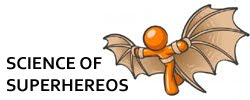Dr. Otto Gunther Octavius is a scientist who designed a set of advanced mechanical arms to assist him with his nuclear physics research. He controlled the arms via a brain-computer interface. In the movie Spiderman 2, Octavius created the mechanical arms to help him conduct nuclear fusion experiments. The arms had their own artificial intelligence, with an inhibitor chip used such that Octavius could maintain control over them.
The arms attached to a harness that was strapped around his body. In great comic book tradition, a freak experimental accident caused the limbs to fuse to his body, and the inhibitor chip was destroyed. The arms themselves took control as Octavius could no longer control them, and mad-scientist Octavius became evil Doc Ock. Interestingly, the limbs were able to defend themselves whilst Doc Ock was unconscious, implying not only self-awareness, but a capability to sense their surroundings.
In this episode, we come closer than we have come before in our series to figuring out a way to recreate a superhero (or supervillain in this case) in the laboratory. The topics discussed in this podcast include:
- Robotics,
- The history of artificial limbs,
- The history of aritifical intelligence, and how to design limbs that could possibly have self-awareness and a desire (and capability) to defend themselves,
- What is nuclear fusion? Is it possible to develop a controlled energy source using nuclear fusion, and if so, could this be the way forward for powering enormous artificial limbs?
- What would the limbs be made from? Is it time to turn once again to Adamantium? See our show on Wolverine for more information.
- Assuming the AI is difficult to accomplish, how could the limbs be controlled? Two methods include:
- Myoelectric prostheses - a myoelectric prosthesis uses EMG signals from muscles on the surface of the skin to control the movements of an attached prosthesis. These prostheses have been used where arms and legs have been amputated, with the prosthesis attaching to the residual limb. The concept of neuroplasticity is also very important here. Neuro- (or brain-) plasticity is the ability of the brain to change throughout life, to reorganise itself and form new connections between neurons. Artificial limbs have recently been controlled by chest muscles - this is an example of the brain learning how to control muscles in a completely new way.
- Remote control - recent work has shown that objects can be remotely controlled by brain waves (EEG). Naturally, this does not mean one can levitate a chair on the opposite side of the room - the brain needs to be hooked up to a computer which reads the brain signals, interprets them and then controls the connected object in an appropriate way. We discussed this a few years ago in our article Space Invaders Mind Control, Small Testes and Facial Expressions.
To listen to this show, tune in here (or press play below):
And on the topic of superheroes, you may enjoy this poster from Russell Walks Illustration. It is a Periodic Table of 122 fictitious elements from sci-fi movies, comics, TV series etc. Adamantium is in there, as naturally is the most famous of them all, Kryptonite. Click on the image below for a closer look and to buy the image as a poster.

Thanks to @markfromhouston for the tip on the Periodic Table poster.













Haven't listened yet, but I was reading the Spiderman comic books when Dock Ock was brand-new; the original arms were manually operated (little wheels that even then didn't appear to have enough range of motion to make the arms do what they did) that only later came under direct mental control.
ReplyDeleteThe wonders of retconning!
Dennis